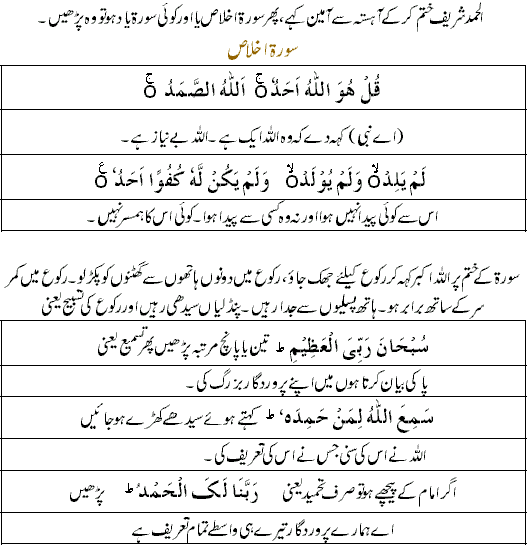

But if he has reached the stage of Sajdah, he should ignore his doubt.ġ524.

But if he doubts whether he has performed four Ruku or five, and if the doubt takes place before he goes into Sajdah, he should perform the Ruku about which he is doubtful. * If a person doubts whether he is in the last Ruku of the first Rak’at, or in the first Ruku of the second Rak’at, and he cannot arrive at any decision, his Namaz-e-Ayaat is void. If a person doubts as to how many Rak’ats he has offered in Namaz-e-Ayaat, and is unable to arrive at any decision, his prayer is void.ġ523. It is Mustahab that qunut be recited before the second, fourth, sixth, eighth and tenth Ruku, but it will be sufficient if qunut is recited only before the tenth Ruku.ġ522. It is Mustahab that the person offering Namaz-e-Ayaat should say takbir before and after Ruku, and after the fifth and tenth Ruku he should say Sami’allahu liman hamida before takbir.ġ521. If the prayer is not being offered in congregation, it is not necessary to say anything.ġ520. However, if Namaz-e-Ayaat is offered in congregation, one may say ‘As-salaat’ three times in place of Adhan and Iqamah. * The things which are obligatory and Mustahab in daily prayers are also obligatory and Mustahab in Namaz-e-Ayaat.

There is no harm if in one Rak’at of Namaz-e-Ayaat, a person after Surah Al Hamd recites another Surah five times, and in the second Rak’at recites Surah Al Hamd, and divides the other Surah into five parts.ġ519. In that event, however, it is necessary that when the Surah is over, one should recite Surah al-Hamd before the next Ruku.ġ518. It is also permissible to divide a Surah into less than five parts. At the end, he should recite tashahhud and Salam after the two Sajdah. Then he should stand up again and say, Walam yakullahu Kufuwan ahad, and then perform two Sajdah and then rise for the second Rak’at, the same way as the first Rak’at. Thereafter he should stand up again and say, Lam yalid walam yulad, and perform the fourth Ruku. He should then stand up and say, Allahus Samad, and perform the third Ruku. He should then stand up and say, Qul huwallahu Ahad, and perform another Ruku. For example, he may say: Bismillahir Rahmanir Rahim with the niyyat of reciting Surah al-Ikhlas, and perform the Ruku. He should repeat this action, and finish that Surah before performing the fifth Ruku. He should then stand up and recite another part of the Surah (without reciting Surah al-Hamd) and then perform another Ruku. * Namaz-e-Ayaat can also be offered in the following manner:Īfter making niyyat to offer Namaz-e-Ayaat, a person is allowed to say takbir and recite Surah al-Hamd and then divide the verses of the other Surah into five parts, and recite one verse or more or less, and thereafter perform the Ruku. Then he should recite tashahhud and Salam.ġ517. He should repeat this action five times, and, when he stands after the fifth Ruku, he should perform two Sajdah, and then stand up to perform the second Rak’at in the same manner as he has done in the first. Thereafter, he should stand and recite Surah al-Hamd and a Surah and then perform another Ruku. Its method is as follows: After making niyyat of offering the prayers, one should say takbir (Allahu Akbar) and recite Surah al-Hamd and the other Surah, and then perform the Ruku. Namaz-e-Ayaat consists of two Rak’ats, and there are five Ruku in each. Thunder and lightning, red and black cyclone and other similar celestial phenomena, which frightens most of the people similarly for the terrestrial events like receding sea water, or falling mountains which engender fear in these circumstances, as per recommended precaution, Namaz-e-Ayaat be offered.ġ516. The prayer becomes Wajib even if the moon or the sun are partially eclipsed, and even if they do not engender any fear.Įarthquake, as an obligatory precaution, even if no one is frightened. * Namaz-e-Ayaat whose methods will be explained later, becomes obligatory due the following four things:


 0 kommentar(er)
0 kommentar(er)
